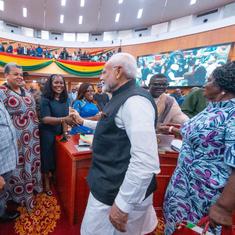Parallel cinema loves Bihar for its stories of poverty, exploitation, caste-based violence, and general misery. Mainstream cinema goes there to find paragons of amorality. Here are our picks of films set in the state that never fails to make news, election or no election.
Teesri Kasam (1955)
Phanishwarnath Renu’s short story Mare Gaye Gulfam inspired Teesri Kasam, produced by lyricist Shailendra, directed by Basu Bhattacharya and starring Raj Kapoor and Waheeda Rehman. Kapoor’s bullock cart driver pays a heavy price for losing his heart to Rehman’s nautanki dancer. Kapoor is the least impressive aspect of an otherwise fine movie with crisp black and white camerawork by legendary cinematographer Subrata Mitra, a luminous performance by Rehman, deep lyrics by Shailendra and music by Shankar-Jaikishan, including the enduring Paan Khayo Saiyaan.
Aranyer Din Ratri (1970)
One of Satyajit Ray’s best-loved films, based on Sunil Gangopadhyay’s Bengali novel and starring Soumitra Chatterjee and Sharmila Tagore. Four friends travel far beyond the comfort zone of Kolkata to Palamu in Bihar, where they imagine their urban ways will charm the local tribals into submission. They imagine wrongly. The complicated encounter between urban and tribal morals and city clickers and forest dwellers explodes in the form of Simi Garewal’s black-face lass.
Paar (1984)
Plot is prologue for the centrepiece of Goutam Ghose’s Paar, in which Naseeruddin Shah and Shabana Azmi transport a flock of pigs through a river in order to earn the money that will help them escape their surroundings. The intense realism of the sequence and the jaw-dropping commitment of the actors and the entire crew make Paar one of the high points for Indian cinema verite.
Apaharan (2005)
Perhaps no filmmaker has tried as strenuously as Prakash Jha to depict Bihar as a basket case. Most of his noteworthy films have been set either in the state of his origin or a place that approximates it. Damul looked at feudal labour, Gangaajal controversially used the notorious blinding of undertrials with acid by police officers in Bhagalpur in 1979 and 1980 to highlight the pressures faced by the men in khaki. In Apaharan, Jha looks at the business of abduction in eastern Bihar. Nana Patekar plays a Mohammed Shahabuddin-inspired kidnapping king who lures Ajay Devgn’s upper-caste victim of the system into his gang.
Gangs of Wasseypur (2012)
Few films have a better stacked gallery of rogues who live only to cuss, plunder and exact revenge. Anurag Kashyap’s two-part saga is set in the coal mining region of Dhanbad, and involves three generations of the Khan clan. The father dies trying to ensure a better life for his family; the son swears revenge on his father’s killers and meets his maker sooner rather than later; the grandson tries to lose his way in a haze of hashish but is ultimately forced to fulfil the prophecy. The story isn’t the point here – it’s the memorable characters, their quirks and idiosyncratic speech patterns, the riffs on local politics and popular culture, the meditation on the influence of Amitabh Bachchan, and Sneha Khanwalkar’s terrific soundtrack.










